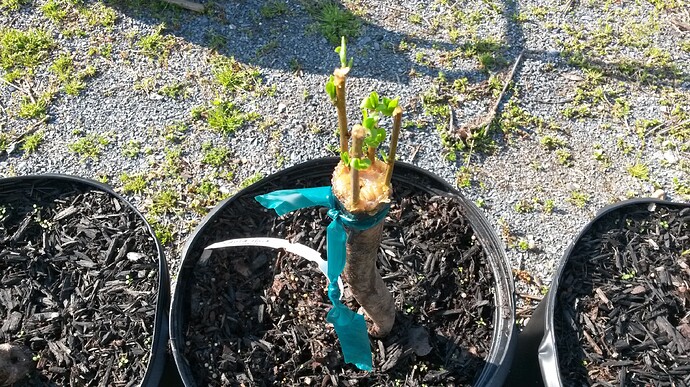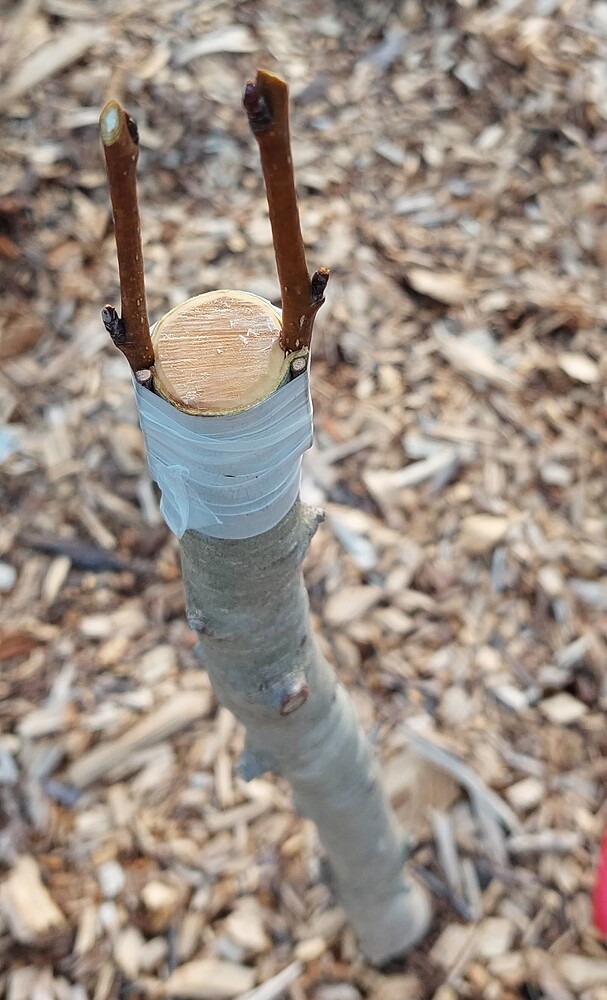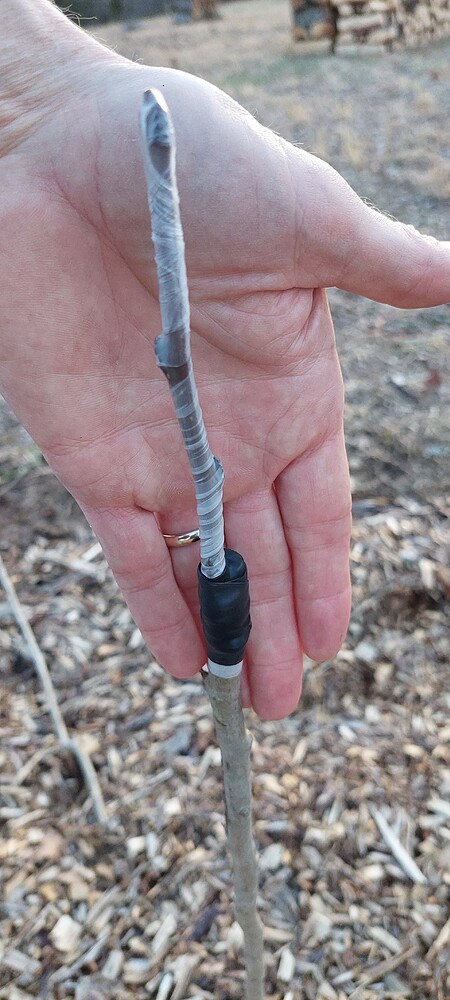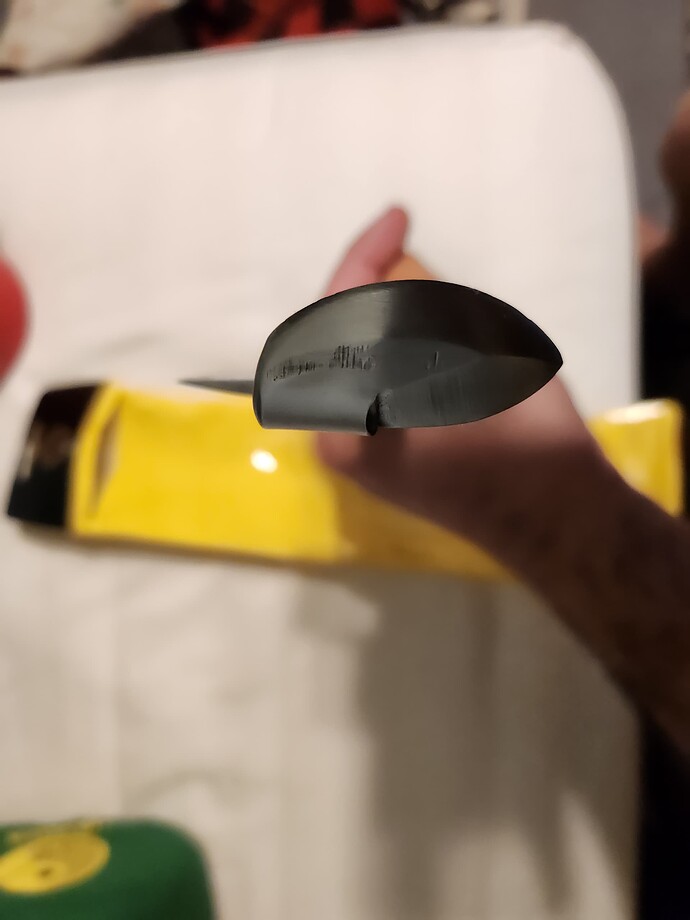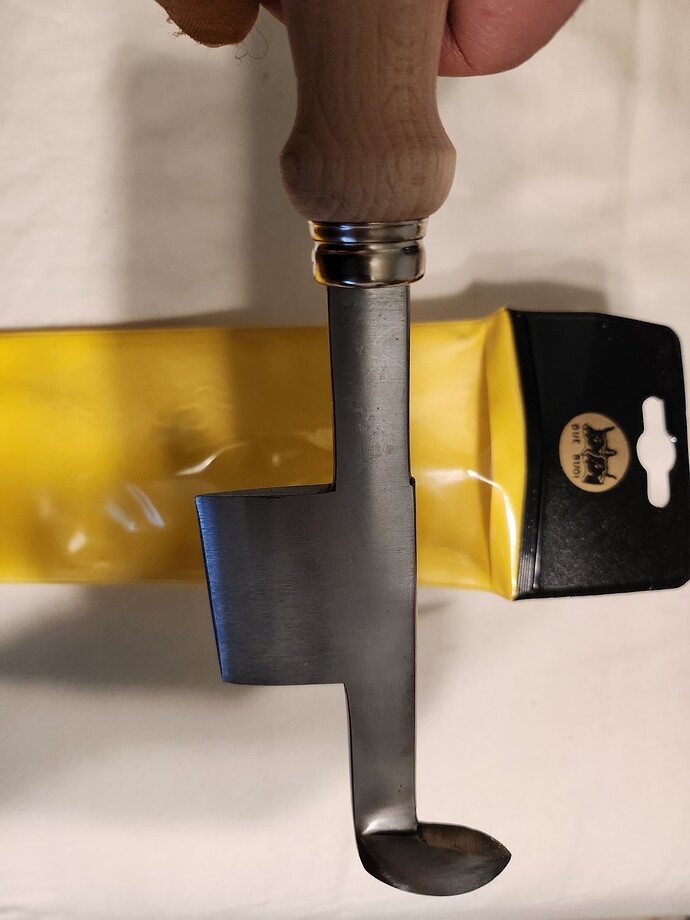Steve, did you originally graft the scions with more buds, and then cut them off above the first bud after they started growing out? Or did you just graft very short scions? Because my scions are growing from all buds and I’m wondering if I should cut them down to one bud just to concentrate the growth, now that they seem to have taken…what do you think?
I cut my scions to 3 or 4 buds. Once the graft has grown out some, I pick the strongest one and cut the rest off. On the graft pictured above, I cut them short because the two bottom buds/branches were outward facing. You can let more than one bud grow. I’ve done it, but they seem to grow slower than leaving just one and letting it grow out
Here they are this morning. Upon closer examination 1, maybe 2, look like they didn’t take. But each tree seems to have taken 2 or more, but I won’t count my chicks yet.
Looking good. Later on, you can trim out the weakest grafts.
Tony
And this round of pics lacked the illusion of having a scion smack dab in the middle of the stock.
The pictures are taken in sunny conditions. Have these grafts been sitting out in exposed weather? Sun? Rain? Or did you shelter these during the grafting period? I’ve stored my grafted whips in an unheated basement with day time ambient light but no direct sunlight. I think some buds are starting to swell slightly but it’s hard to tell right now. I feel like I should take them outside and give them some fresh air. lol. But I don’t want to bake them or dry them out too much.
They’ve been in a hoophouse with white poly covering. Just took them out this morning for some sun. Back in soon since storms and cold nights are coming.
if it were me speedster I’d leave them outside, but tonight here it’s supposed to get down to 28. I don’t know what the weather is supposed to be like at your place. Even the 28 shouldn’t bother them, but since you’ve kept them in I think you might as well wait until that is over with.
Frost the next couple nights, but after that they’ll be outside.
This is an old post but any chance you could post an update on how things went? Considering bark grafting on one of my trees. @ampersand
I had a question about bark grafting…
So in this video only the regular underside of the scionwood is cut and then inserted into the bark (around this time of 2m40s). i guess he also shaves off a tiny bit of the side at that moment in time for some reason.:
In this “bark grafting for persimmons” pdf, they recommend shaving off the bark of the scionwood (on its opposite non-cut side) until you get to the green layer be4 inserting into the bark graft, as seen in the pic in step #3:
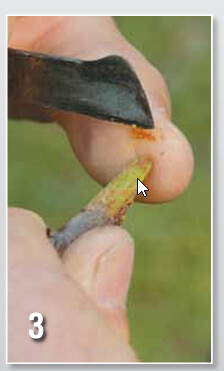
Just curious if you’d recommend this 'shave scionwood until you hit the cambium green layer" technique always for all types of bark grafts? or only in some instances?
I read about this technique in the context of grafting the more difficult woods -I think it might have been hickory/pecan, but don’t remember, since I’ve only ever grafted apple, pear, plum and apricot. It makes sense and I’ve done it. It’s very easy -just a couple of light strokes to tidy up the edges- and only takes a second.
I learned to bark graft also known as rind graft many years ago. Stephen hayes has videos using the techniques i know work. He does it exactly the same way i do. Notice he leaves some bark on the side of the scion. He shaves down both sides. Im not saying what other people do doesnt work but i know what i do works. One of my tricks is to use the smallest toothpick sized scions i can get for this technique then i slip them in under the bark of the rootstock. The smaller the gap between the bark the higher success i have. My take rate in pears and apples is normally 90 - 100% . Sometimes toothpick scion is all someone has available but it is exatly what i want and need for larger trees.
My first graft was a bark graft… mulberry.
It went very well…
Last year did this bark graft on callery pear adding improved kieffer.
Again… very well.
But on another smaller callery rootstock… the rootstock was not big enough for me to bark graft to… scion was almost as big as the rootstock… so I did modified cleft graft.
Again very well…
But I did experience this. The modified cleft graft started pushing growth faster and at a steady rate… where the bark graft was slower.
For a few weeks i was worried the bark graft might not make it… because i was comparing the growth from both and the modified cleft just out performed the bark graft in the early new growth stages.
Both ended up doing very well.
TNHunter
I see he cuts evenly on both sides it looks like. So I guess the cambium contact when inserted into the bark would be at the edges? I wonder basically if the points-of-contact where all the ‘good stuff’ (cambium contact).of grafting occurs is only the edges of the scionwood for that kinda graft like this:
and if so, when its placed in the rootstock, is it in the middle of a kinda large cambium layer so then both the front and back sides of the scionwood on the green lines above are contacting the cambium layer of the rootstock so it has 4 lines of contact basically?
While the bark technique in the persimmon pdf has the green layer going all the way around and does that offer 100% contact everywhere like so when inserted into the graft:
Well maybe 100% contact on the side facing you since that flap of the rootstock gets placed over that shaved-off green scion layer like below:
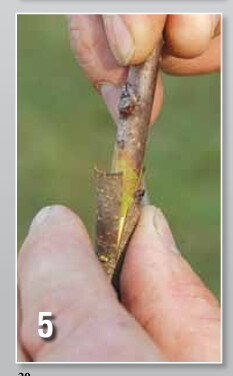
and i assume that rootstock flap still the cambium layer and not just pure bark …
or is it pure bark?.. and therefore its still basically the same contact points as the 1st more red looking picture… but only contact on 2 lines the side facing the rootstock since its not placed in the ‘middle’ of a large thickness cambium layer… hmm is the flap then just to keep it in place? Not sure since there looks like a bit of wood on the flap as seen in pic below:

Absolutely the more cambium contact the greater your success. Slow growth is due to reduced cambium contact short term in my opinion but once it takes it does. Cleft also heals faster in my opinion sometimes in terms of 4x faster. With larger trees thats years of difference! With large trees bark grafts are one of the only options.
That first photo that TNHunter displayed is exactly how I prep my scions for bark grafts with most stuff - a long sloping cut, like for a simple whip/splice graft, shave off the two ‘sides’ to expose more cambium, and slide it down into a single vertical slit in the bark until the cambium at the top of the basal cut on the scion is just above the top of the beheaded rootstock.
And yes, when the bark is ‘slipping’, if you peel back that bark flap, there are cambium cells both on the ‘backside’ of the bark, as well as on the exposed sapwood of the rootstock, as well as at the bark/sapwood interface at the two ‘edges’.
Regarding this pic…
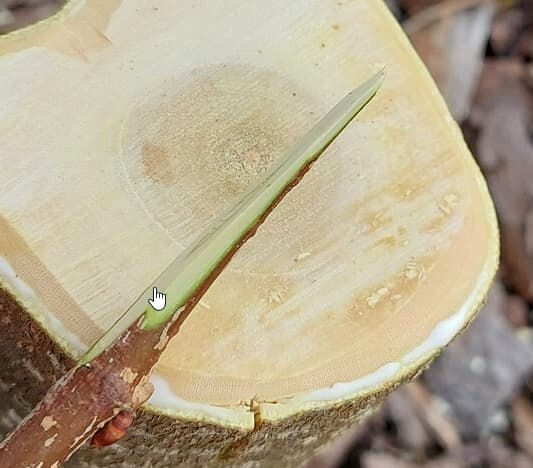
if the bark is slipping does it make sense to also shave off the scion bark like the persimmon tutorial pic below, in addition to the 2 ‘sides’ cuts (and main bottom cut), so that you also get contact to the back rootstock area too? Why not do that as well for every bark graft if the scionwood bark impedes more cambium contact with that rootstock layer that has cambium cells there too?

For that particular modification - and I think Cliff England uses that one fairly extensively - I would not shave the sides…it’s really kind of a combination of a simple whip/splice and a bark graft. Probably stronger, early on than the simple bark graft I do, but a bit more involved.

